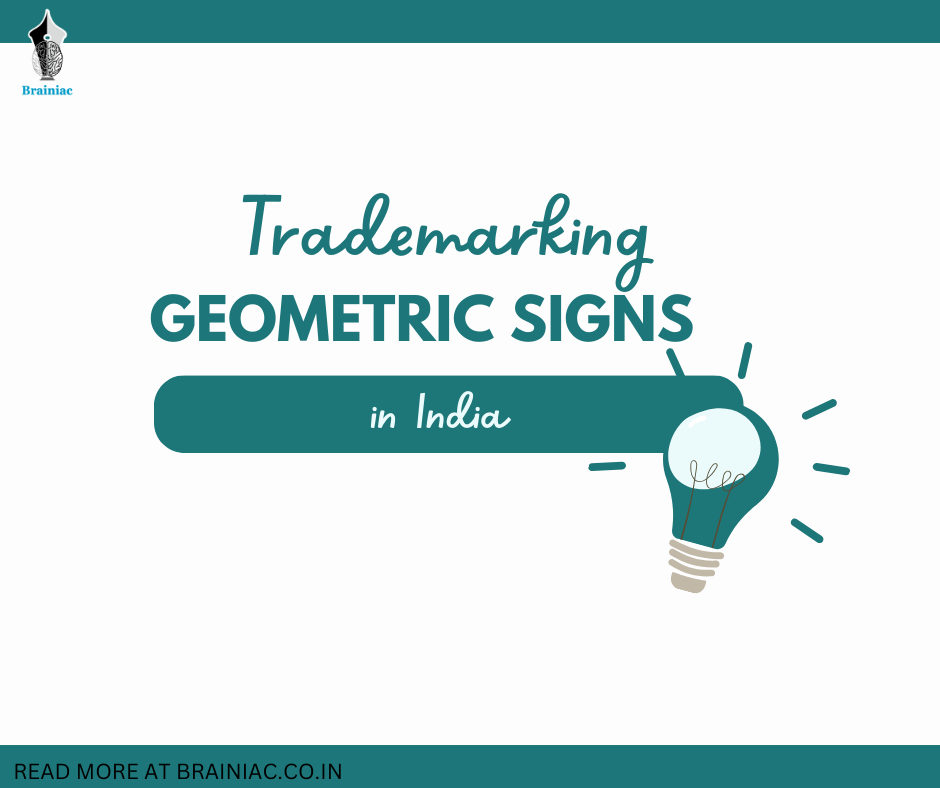Introduction
In the realm of intellectual property, trademarks serve as crucial assets for businesses, distinguishing their products or services from competitors. Traditionally, trademarks have included words, logos, and even distinctive packaging. However, in the age of evolving design aesthetics, the question arises: Can geometric signs be trademarked in India? If so, how does one go about it, and if not, what are the reasons behind such limitations?
Trademarking Geometric Signs in India
In India, the legal framework governing trademarks is primarily encapsulated in the Trademarks Act, 1999, and the Trademarks Rules, 2017. According to these regulations, a trademark can be any sign capable of being represented graphically and capable of distinguishing the goods or services of one enterprise from those of other enterprises.
This definition is broad and inclusive, encompassing various types of marks, including geometric signs. Geometric signs, such as specific shapes, patterns, or combinations thereof, can indeed be registered as trademarks in India, provided they fulfil the essential criteria of distinctiveness and capability of distinguishing one’s goods or services.
However, the geometric signs seeking trademark registration also have to pass one more criterion which is beyond the distinctiveness of the trademarks. This is called the ‘functionality criteria’ mentioned under section 9(3) of the Indian Trademarks Act, 1999. Let us understand the concept in detail.
Functionality Challenges
Objection Under Section 9(3): In the context of Indian trademark law, Section 9(3) of the Trademarks Act, 1999, is crucial in addressing functionality concerns. This section states that a mark shall not be registered if it consists exclusively of a shape that results from the nature of the goods themselves, or is necessary to obtain a technical result, or gives substantial value to the goods.
Technical Functionality: If the geometric sign is purely functional, serving a utilitarian purpose or directly related to the nature of the goods or services, it may face challenges during the registration process. For example, if the shape of a product is essential for its functioning or if it provides a technical advantage, it might be considered functional.
Substantial Value: If the geometric sign adds substantial value to the goods, going beyond mere ornamentation, it may be seen as functional. This often applies to product shapes or configurations that significantly enhance the utility or aesthetic appeal of the product.
Strategies to Follow
There are a lot of strategic things to think about when registering geometric signs in order to find the right balance between creativity and functionality. One important method is creative adaptation, which means adding unique design elements to make things work better. In a market full of competitors, brands can make their geometric signs stand out by emphasising their unique qualities that go beyond their practical uses.
Another important strategy is to draw attention to non-functional, unique parts of the geometric design. Parts of the mark that aren’t just descriptive or functional—those that are random, imaginative, or suggestive—help to make it stand out. This focus on unique qualities makes the case for registration stronger since trademarks that are naturally unique are more likely to pass the application process.
Because functionality objections are so complicated, it is best to get legal help during the trademark registration process. Intellectual property lawyers can give you useful information about how likely it is that someone will object because of how something works and help you make strong arguments to counter those concerns.
In essence, a collaborative effort between creative adaptation, emphasis on distinctive features, and legal counsel is essential to strike the right balance and secure trademark protection for geometric signs.
Examples of Brands Using Geometric Signs as Trademarks:
Several iconic brands have successfully incorporated geometric signs into their trademarks, leveraging these symbols to enhance brand recognition. The Nike “Swoosh” is a distinctive, curved checkmark that serves no functional purpose in the context of athletic apparel and footwear. It doesn’t contribute to the functionality of the products; instead, it’s a visually striking design chosen for its aesthetic appeal.
Similarly, the three-pointed star in the Mercedes-Benz logo doesn’t serve a functional purpose in the engineering of automobiles. It’s a stylized and unique design element chosen for its symbolic representation rather than any utilitarian function.
In both cases, these logos go beyond mere functionality and contribute significantly to the brand’s identity and recognition. They are unique, arbitrary, and serve as powerful symbols rather than functional elements and the combination of non-functionality and distinctiveness makes them strong candidates for trademark registration.
Conclusion
In conclusion, Indian intellectual property laws unequivocally allow for the trademarking of geometric signs, provided they meet the criteria of distinctiveness, capability of distinguishing goods or services and are non-functional. As businesses strive to create lasting brand impressions, geometric signs offer a visually striking and effective means of achieving recognition in the market.


